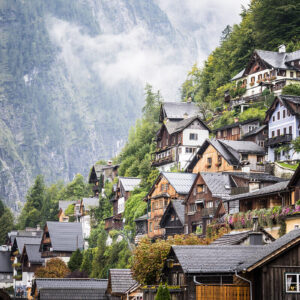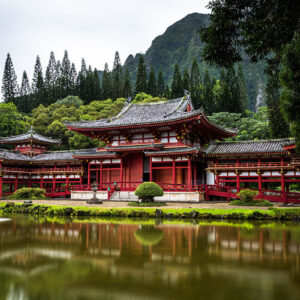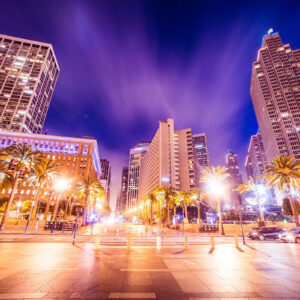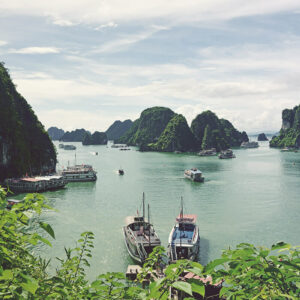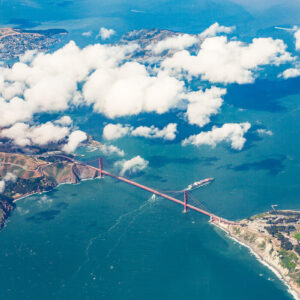Known as the world’s largest caldera, Ngorongoro Crater is found in Northern Tanzania, and southeast of Serengeti National Park. This Volcanic Crater sits in Ngorongoro District, 180km west of Arusha city, perfect for your Ngorongoro Crater Safari. It boasts breathtaking highlands and grasslands, and a variety of wildlife strut across its vast savanna grasslands, ideal for your Tanzania Crater Safari best offered by professionals from Koi Safari Holidays.
Voted as one of the Seven Natural Wonders in Africa in 2013, a Ngorongoro Crater Safari entails sights of the big five: lion, elephant, African buffalo, rhino and leopard, a spectacle you do not want to miss out on. Book with Highlights of Africa Safari today for your Ngorongoro Safari Tours and Holidays.
Famously known as the UNESCO World Heritage Site, Ngorongoro Crater Safari Tanzania brings you to the home of the black rhino, one of the globally threatened species. The annual migration of wildebeests, also known as the Great Migration marks the highlight of your Ngorongoro Safari and we at Koi Safari Holidays ensure that you fully bask in this life-changing experience. Ngorongoro Crater is also the heart of Ngorongoro Conservation Area, a protected area that spans lush savanna grasslands, woodlands and forests perfect for your Tanzania Crater Safari.
Ngorongoro Conservation Area is found in East Africa and extends into a portion of the Eastern Great Rift Valley, bringing volcanic craters, mountains, forests, rivers, lakes, savanna plains and grasslands, and swamplands for your eyes on a Crater Safari Tanzania. In the Ngorongoro Crater neighborhood are archaeological sites of repute like Laetolil and Olduvai Gorge, some of the best places to visit on your Ngorongoro Safari tours and holidays. Within these Ngorongoro archeological sites are hominin remains dating back 3.6 million and 2.1 million years that leave you with something new to learn on your Tanzania Crater Safari.
Due to the tourist traffic common to Tanzania, as tourists from far and near journey to explore and experience a Ngorongoro Safari tour and holiday, we advise that you spend at least two to three nights in these rims, if you wish to fully revel in the joys this adventure holds in promise. Book with us at Koi Safari Holidays to adventure dreams to life.
Great value holidays with TourWP Holidays
Other top things to do on your Ngorongoro Crater Safari Tours Include; Uganda Safari Holidays, Serengenti National Park Trips, Rwenzori Trekking, , Kenya Gorilla Trekking, and a Murchison Falls Tours.
Let’s start with some benefits TourWP
Hightlight holidays with TourWP
Activities to Engage in while at Ngorongoro Crater
Ngorongoro Crater
Ngorongoro Crater and Conservation Area are an attraction to many, bringing a multitude of tourists on this Tanzania Crater Safari throughout the year. It ranks in the league of Murchison Falls National Park, where one can find Africa’s most famous five mammals commonly called the Big Five: lions, elephants, buffaloes, leopards and rhinos.
It is a habitat to over 26,000 large mammals and 500 different bird species which any lover of wildlife must see for themselves on a Crater Safari Tanzania. It further spreads its arms to a variety of animals besides the big five, namely: wildebeest, zebras, hippopotamuses, cheetahs, waterbucks, crocodiles, jackals, warthogs, reedbucks, servals and hartebeests.
The most popular activities on a Ngorongoro Crater Safari are nature walks, game drives, picnics, birdwatching, photographic safaris, hot air ballooning, visiting the Maasai villages, visiting the Empakaai Crater, tour of Oldvai Gorge, hiking the summit of Oldoinyo Lengai and the Gol Mountains. Others Ngorongoro Safaris include visits to lake Magadi, Olmoti Crater and Lerai Fever Tree Forest.
Game Drives
Game drives are the best way to track and watch wildlife while on a Ngorongoro Crater Safari. The thrill about game drives is that you can get as close enough to the animals as possible, sometimes witnessing a lion or elephant crossing the road without need for binoculars on this Tanzania Crater Safari.
The drives on a Ngorongoro Safari are not only exciting but surreal, especially those moments when you catch the wildlife in action e.g., a lion hunting, buffaloes having a mud bath or elephants on an odyssey with their calves.
Ngorongoro Safari drives are done with a professional tour guide and in a standard van. They happen in two shifts, that is morning and afternoon. The big five are always out in the open savanna for each safari, in addition to birds, lakes, flowing rivers and affluent forests.
Crater and Nature Walks
After a long Ngorongoro Crater Safari drive, you might’ve retired to your lodge, suite or place of accommodation for a nap. After refueling, the urge to explore comes over you, do not resist it. Let the zeal guide your feet on an evening stroll around the rim of the Ngorongoro Crater.
To say the scenery is breathtaking would be to plainly state it; that view gets a hold of you. As the sun sinks behind the undulating highlands, a halo infiltrates the Crater, waking silhouettes and a gentle pristine breeze for a spiritual cleansing. Experiences like this are hardly done justice in narration, reason why you should come with Koi Safari Holidays on a Ngorongoro Safari tour and holiday.
On the western wing of the Crater, woodlands wave in unison, along with acacia forests and low-lying grasslands. As your eyes hop about the plains on your Tanzania Crater Safari, you might glimpse the Maasai pastoralists sauntering about, either taking their cattle to graze or retiring to their kraals.
Photographic Safari
There is a plenitude of wildlife and scenery at which one could point their lens while on a Crater Safari Tanzania. A photographic safari could best happen as part of a game drive, but with a lot more stops and longer waits at hotspots or spots of interest, allowing time for many camera-clicks until more than one perfect shot is attained.
Ngorongoro Crater Safaris offer a lot more than just animals, such as birds, lakes, rivers, highlands and more. Ngorongoro Crater and Conservation Area sure is one of the best places for one to engage in wildlife photography.
Hot Air Ballooning
If you’re looking to fully take in the whole Ngorongoro Crater Safari, then hot air ballooning is an activity you should not miss out on. Up in the air, as the balloon hovers in tranquility, you have a front row seat to some of the most fulfilling experiences ever: watching wildlife in motion.
The balloon is a favorite of many on a Tanzania Crater Safari, especially during the migration, when wildebeest are running or roaming outside the Crater toward the Serengeti. Within the balloon, you will appreciate the grandiose size and magnificence of the Crater.
On Ngorongoro Safari tours and holidays is where some of the best photography is taken. The hot air balloon almost levels your ground with the birds. Here, you can take closer and clear bird and sunset pictures. Book with us today.
Olduvai Gorge / Museum
Known as the Cradle of Mankind, Oldvai Gorge is home to the oldest archaeological discoveries which you’re sure to see on your Crater Safari Tanzania. In the early 20th century, Leaky discovered the remains of the first hominids in Olduvai Gorge. Some of these were found to date back more than 2 million years ago.
The fossils are remnants of animals that once roamed the place but are now extinct, and the more recent stone age man. These artefacts are some of the prized possessions that await you on a Ngorongoro Safari. There are also hominid footprints in Laetoli, believed to be over 3 million years old, found in a volcanic rock.
In case you are a fan of artefacts, book your Ngorongoro Safari tour and holiday with us today for there is a small museum that serves as a home to the excavated artefacts and remains. And the good news is, it is very much open to the public and for tourists to quench their curiosities.
Visiting the Maasai Tribe
The Maasai is one of the most fascinating and well-preserved tribes in Africa that still maintains its cultural practices as was decades ago. These and more await you on a Ngorongoro Safari. Known for their semi-nomadic way of life, rearing large herds of cattle and sometimes goats and sheep. The Maasai contribute a great deal to the cultural heritage of the Ngorongoro Conservation Area, having been three-time victors over other tribes who sought to settle within the same land.
For years, the Maasai’s cattle and the wildlife have shared the pastures and water in the Crater rim mostly during the dry seasons. They are a friendly and welcoming lot who freely share about their culture and perform some really energetic dances for tourists on a Tanzania Crater Safari.
Arrangements are usually made for tourists Crater Safari Tanzania tourists interested in learning more about them in their villages and homes so they can interact with them in person. Be sure to return with a piece of their craft from your Ngorongoro Crater Safari.
Visiting Tanzania’s Last Bushmen
About 300 years ago when the Maasai arrived in Serengeti, the Hadzabe Tribe and other bushmen were driven out to more remote areas of the park. Approximately 2000 of these bushmen still live in these areas and you will have a chance to interact with them on your Ngorongoro Safari tour and holiday.
These bushmen still live by the rudimentary ways of survival that involve hunting and gathering. A visit to their village on your Tanzania Crater Safari will help you get a better understanding of their lifestyle and way of life. Get in touch with us today to make a tailor-made itinerary for your Ngorongoro Crater Safari.
Bird Watching
Ngorongoro Crater is home to many species of birds, making it one of the best places in Tanzania for birding. The common bird species to look out for on a Ngorongoro Crater Safari are flamingos, crowned cranes, and kori bustards. One can also see the forest buzzard, gold winged sunbirds, and the African cytrill on their Ngorongoro safari from the rims.
Empakaai Crater
The Empakaai Crater, formed when a volcano collapsed into a 6km wide caldera, is regarded as the younger sibling to the Ngorongoro Crater. It might not be as prominent but it has so much to offer on a Tanzania Crater safari. The greater fraction of it is covered by an alkaline lake that is about 85 meters deep.
The lake changes color depending on the time of day and attracts thousands of flamingos due to the presence of loads of algae. This Crater safari Tanzania takes you to the rims of the Ngorongoro Crater, home to pink flamingos, water bucks, buffaloes, blue monkeys, bush bucks, elephants and hyenas. Beyond the Ngorongoro Crater stands Mt Kilimanjaro and Ol Doinyo Lengai. Let us take you there!
Hiking the Summit of the GOL Mountains
The scenetic Gol Mountains are found in the Serengeti National Park, one of the best destinations to add to Ngorongoro Crater safari. They present magnificent views of wildlife and a preservation of culture as the Maasai herdsmen can be spotted herding and grazing their cattle on the mountain floor.
At the mountains’ base is the famous Nasera Rock from where one can watch hundreds of bird species and countless baboons. Views that make Ngorongoro Safari tours and holidays worthwhile.
Remains of the ancient humans who lived in this area during the Stone Age period were excavated by the Leakey family. On this Crater Safari Tanzania, you will learn that the Leakey family excavated remains of humans who lived there during the stone age period. The Gol Mountains are truly a marvel to behold.
Olmoti Crater
From the Maasai lingo, Olmoti means cooking pot. This and more you will learn on your Ngorongoro Crater Safari. Standing at 3080m above sea level, the shallow crater thrives within the highlands of Ngorongoro Conservation Area. The low highland grassy terrain is perfect for nature walks and hiking.
It’s the area most frequented by the Maasai, a fascinating tribe to encounter on your Ngorongoro safari. The Maasai’s cattle are often seen grazing alongside buffaloes, reedbuck, bushbucks, and eland. Within the neighborhood gushes a 100m tall waterfall pouring into Lake Magadi. Make sure to visit it too.
Lake Magadi
Commonly known as the salt water lake, Lake Magadi holds one of the most breathtaking sceneries to behold on your Ngorongoro safari. Also famous for its thousands of flamingos like forage for green algae in the shallow alkaline waters, Lake Magadi is home to many wading birds like pelicans.
The scenery on this lake is particularly breathtaking because when the flamingos gather to feed, the color of their feathers is reflected by the water creating a scintillating pink or orange hue about the water surface. This enthralling sight is most likely to hold you in a trance on this Tanzania Crater Safari. It is without a doubt, one of the best places for birding in Tanzania and East Africa at large.
Lerai Fever Tree Forest
Famous for its tall and slim acacia trees with yellow leaves, Lerai Fever Tree Forest is easily one of the most fascinating attractions for nature lovers on a Ngorongoro safari tour and holiday. The forest is found in Ngorongoro Crater and it wields its magic all year round, attracting all stripes of wildlife. It is considered the best place for one interested in seeing the black rhino.
The forest vegetation easily appeals to the black rhinos as well as the elephants, hyrax, birds and bushbucks that find attraction in the trees, and all these you are sure to see on your Ngorongoro safari.
Ngorongoro Crater Rim Accommodation
Ngorongoro Crater Lodge (all-inclusive)
The Ngorongoro Crater Lodge is andBeyond’s flagship property and the most iconic hotel on the rim of the crater. It is the grand old dame of a Tanzania safari, and fit for royalty. However, it is extremely expensive, and it could be true that nowadays you can get a more quirky and interesting experience for a lot less by choosing Entamanu or the Highlands instead. Fly into Lake Manyara and you are looking at $1,775 per person per night to stay here…
Entamanu (all-inclusive)
Entamanu, like the Ngorongoro Highlands, has taken a ski-chalet approach to the interiors and it works exceptionally well. Cozy rooms draped in fluffy blankets and open fires epitomizes this truly characterful Crater option. What sets Entamanu apart from the Highlands is that it sits right on the crater rim, with sweeping views into the valley below on one side, and the southern Serengeti on the other.
For lovers of a view and an intimate experience, it has to be Entamanu. Entamanu also offers a walk along the crater rim, though there is perhaps a bit less to do than The Highlands if you want to experience more than just a walk and a crater descent. They are difficult to choose between, but for a longer and more varied stay, then go to The Highlands, and for a short two night stop and to be in an unbeatable crater location, look at Entamanu.
To stay in this amazing position on the rim of the crater with the fantastic accommodation with it, you are looking at $1,060 per person per night.
Lemala Ngorongoro (all-inclusive)
Lemala Ngorongoro is buried on the rim of the crater in an ancient acacia woodland – it is almost rainforest-like and you feel truly isolated here. It is extremely close to the quiet Lemala gate which is not used by many other camps, which means you can get a bit more time in the crater to yourself than if you were to stay on the other side where most of the lodges are.
The camp itself is nice, but basic when considering the price – $940 per person per night! If you are already paying this price, you may as well add on $100 more and stay at The Highlands or Entamanu which take quality accommodation to a whole other level.
Serena (full board)
The Ngorongoro Serena is part of a bigger hotel chain which operates all over East Africa, with some in the Middle East too. The hotels are generally perfectly nice, with comfortable beds, good food and the Ngorongoro one has an excellent location on the crater rim.
It is particularly good for families who want to be in a big hotel complex if they have younger kids. A good option, but certainly not the cheapest at $514 per person per night; given the choice, it could be more special to go with some of the more authentic options, which although cheaper, may offer a more enriching and fitting crater experience…
Sopa (full board)
Ngorongoro Sopa Lodge is set on the rim of the crater, and has phenomenal views. There is no denying that Sopa is essentially just a big chain hotel, which could essentially be anywhere in the world, let alone on the rim of the Ngorongoro Crater.
It is $341 per person per night, for which you get a pool with a view, and a basic yet comfortable room. There is not an awful lot more to it, and for this price you can get a much more intimate and unique experience in the likes of Kitela or Plantation Lodge.
Rhino Lodge (full board)
At $140 per person per night Rhino Lodge Ngorongoro is the most economical option to stay at for your crater visit. It is basic, but well positioned as it is set just back from the crater rim. It would be a great option for a family or group of friends on a budget, as you can split the cost of your private vehicle and guide from Arusha, and end up with a very reasonably priced Ngorongoro stay.
However, if you are going as a couple then it is still quite expensive for a few nights for the relatively low quality of accommodation you get. It is big, and not your classic intimate safari lodge experience, but if you want to keep the cost down, want a good location and don’t want any frills then it is a good option.
Ngorongoro Highlands Accommodation
The Ngorongoro Highlands wrap around the underbelly of the Crater and border the Serengeti to the North. There are an awful lot of accommodation options here, from ones which are totally isolated in the rolling hills, to the various options in the small area of Karatu. Here are the best options for various budgets and styles…
Highlands Ngorongoro (all-inclusive)
The Highlands Ngorongoro is a real stand out property and has a price tag to match at $1,058 per person per night, although, remember this does include your crater visit as well as your vehicle and guide costs. The rooms are cozy igloos, which have transparent fronts so you can look out onto an amazing view of the surrounding highlands.
The ski-chalet northern European feel is emulated too in the huge circular main area focused on the centerpiece log-burner, and the little cozy snug where guests can enjoy a night-cap before bed. The food is excellent, the location and accommodation even better, and all in all it is for those who maybe want to spend more time exploring the Ngorongoro region on foot, as well as just descending into the crater.
It is not the place to go to be close to the crater though – it is so special because it is isolated. So bear this in mind when weighing up the pros and cons of each lodge. This is ideal for those who love walking, culture and want something a little different to just your standard crater descent experience. The Highlands is also wildly romantic for honeymooners, and unforgettable for families too.
Koi Safari Holidays is here to give you the Ngorongoro Crater Safari experience of your life. Contact us and let us give make your planning a lot easier.
Frequently Asked Questions
What to know before going to a Ngorongoro Safari / Facts about the crater?
The Ngorongoro Crater in Tanzania is the largest unfilled inactive volcanic crater, or caldera, in the world. However, it’s not entirely empty as a wildlife spectacle unfolds in this dramatic setting. At the base of the 610m cliff faces elephants trumpet, lions roar, and antelope…eat grass.
The Ngorongoro Crater is arguably the best place in Tanzania to see the big five. It is also a UNESCO World Heritage Site and one of the most mesmerizing natural features in the world.
Humanity has deep ties to the crater as well. The Ngorongoro Conservation Area is home to footprints that date back the oldest hominids walking upright, nearly 3.7 million years ago. The age combined with other finds suggests that Northern Tanzania and the Ngorongoro Conservation area is the birthplace of humankind.
One’s first descent into the crater is filled with a sense of our primordial origin. In the early morning, a fine mist rolls over plains filled with wildlife. To watch the sunrise from within the Crater is one of life’s greatest experiences.
Koi Safari Holidays is here to give you the Ngorongoro Crater Safari experience of your life.
What’s the best time to visit Ngorongoro Crater?
Wildlife viewing at the Ngorongoro is excellent throughout the year because the animals don’t migrate. However, the dry season from December to March and also June to September offer the best wildlife experiences. Around those months, there are no rains and there is less mud within the crater. The savanna grasslands are shorter allowing for better wildlife viewing. It is during the dry season that Animals congregate at the few remaining water holes hence allowing tourists to see most of them in one place. Unfortunately, the dry season is when most tourists come to the crater.
To avoid the crowds and have a more private safari, you should consider going during the rainy season. The rainy season finds the entire country green and beautiful. It is also the best time for birding. So, all in all, we would recommend that you visit at around the time when the wildebeest migration is occurring outside the crater and the Serengeti. This will allow you to spot wildlife both within and outside the Crater. Koi Safari Holidays is here to give you the Ngorongoro Safari experience of your life.
How many days should I spend on the safari?
It is advisable to spend at least 2 to 3 nights in these rims, if you wish to fully revel in the joys this adventure holds in promise. This is due to the tourist traffic common to Tanzania throughout the year, as tourists from far and near journey to explore and experience the variety of wildlife.
And feast with their own eyes the spellbinding sunsets and magnificence of the geographical terrains mapping out the land, and partake of the many rejuvenating activities on the itinerary. Contact Koi Safari Holidays for a tailor-made Ngorongoro Crater Safari itinerary.
Where is Ngorongoro Crater located?
Ngorongoro Crater, extinct volcanic caldera in the Eastern (Great) Rift Valley, northern Tanzania. It lies 75 miles (120 km) west of the town of Arusha. The caldera measures between 10 and 12 miles (16 and 19 km) across and has an area of 102 square miles (264 square km).
Koi Safari Holidays is here to give you the Ngorongoro Crater Safari experience of your life.
How to get to Ngorongoro Crater?
The Ngorongoro Conservation area is located 185 kilometers away from Arusha. It can take about 3 hours to get to the area from Arusha by road. Visitors can also choose to use one of the chartered flights from Arusha Airport or Kilimanjaro International Airport to Lake Manyara Airstrip in Ngorongoro. Once they land at the airstrip, a car from their chosen tour company or lodge would be waiting to take them to the crater.
There are a variety of accommodation facilities available for travelers to the Ngorongoro crater. One can choose to stay in a budget, mid-range or luxury lodge. Some of the popular lodges include Ngorongoro Crater Lodge, Gibbs Farm, Lemala Ngorongoro Lodge, Lions Paw Camp Ngorongoro, Ngorongoro Crater Lodge, Ngorongoro Serena Lodge, Ngorongoro Sopa Lodge, the Ngorongoro Farm house and the Plantation Lodge.
Which wildlife should I expect on my Ngorongoro Crater safari?
Your best bet of seeing the Big 5 in a single day
Home to one of the densest mammal populations in the world, the Ngorongoro Crater is your best chance of seeing the Big Five: African lion, African elephant, Cape buffalo, African leopard, and Rhinoceros.
Other animal sightings include gazelle, wildebeests, zebras, cheetahs, golden jackals, and topi. The crater itself might be compact in size when compared to other national parks in Tanzania, but it still boasts of more than 500 bird species.
Round-the-year wildlife viewing opportunities
A Ngorongoro safari is always exciting because you can see animals in every direction from your vehicle. Spotting the Big Five in one single day is highly likely and you can even get out of your vehicle in select locations.
Is it possible to do Ngorongoro safari with other destinations?
Most tourists tend to combine a safari in the Serengeti with a visit to the Ngorongoro crater and other national parks in the northern circuit. Let’s now go to the main activities while on a safari in the Ngorongoro Conservation area: –
A safari in the Ngorongoro Crater can easily be combined with other popular destinations along the northern Tanzania Safari Circuit among which are: the Serengeti National Park, Tarangire National Park, Lake Manyara National Park, Mount Kilimanjaro and Arusha National Park.
The best time to visit both the Serengeti and Ngorongoro Crater is generally said to be between June to October and January to March, although prices are higher as its peak season.
June to October is the cool, dry season so the animals tend to be easier to spot.
June and July are good months for viewing the wildebeest migration, especially if you are on a budget or mid-range safari, as this is when the herds are in the most accessible parts of the Serengeti. This is also the busiest time of year. Nights are cold, especially on the Ngorongoro Crater rim.
As you get into August, the herds start to cross into the Mara, spending much of August, September and October on the Kenyan side of the Mara ecosystem. This is when you are likely to see the famous river crossings. Not all drives in safaris can reach this area, so if you are expecting to see the migration in these months from the Serengeti side, you may be disappointed, but wildlife viewing is still amazing with or without the migration and there are non-migratory wildebeest too.
November and December bring the short rains, this is also an okay time to visit, not too busy and still pretty good wildlife viewing.
April and May bring the long rains so most people tend to avoid this time of year but with the rains comes the beautiful greenery. Plus, prices are cheaper!
Our favorite time to visit the Serengeti and Ngorongoro Crater is around January, February and early March during the wildebeest calving, when the migration is in the southern part of the Serengeti and in the Ngorongoro Conservation Area. This is an awesome and very dramatic time when around 8000 wildebeest calves are born every day. This makes the predators go wild, so you will likely see a lot of lions and hyenas hunting, often at the same time.
What are the accommodation options within or around the Ngorongoro Crater?
There are a variety of accommodation facilities available for travelers to the Ngorongoro crater. One can choose to stay in a budget, mid-range or luxury lodge. Some of the popular lodges include Ngorongoro Crater Lodge, Gibbs Farm, Lemala Ngorongoro Lodge, Lions Paw Camp Ngorongoro, Ngorongoro Crater Lodge, Ngorongoro Serena Lodge, Ngorongoro Sopa Lodge, the Ngorongoro Farm house and the Plantation Lodge.
What should I wear on a safari to Ngorongoro Crater?
Casual, comfortable clothing is suitable throughout the year. Due to the high altitude on the rim of Ngorongoro Crater it can be cold at night (even in summer) therefore it is very important to pack warm clothing for the nights. The most practical items to pack are:
- Khaki, brown, white and beige colors
- Light cotton tops and cotton trousers/shorts in summer
- Long sleeved blouses/shirts for game drives Safari trousers for evenings and cooler days
- A fleece or sweater and a warm jacket for game drives (and at the Ngorongoro Crater)
- Swimwear is a must for the beach A hat, sunglasses and sunscreen
- Thermal underwear, light layers, sweater, warm jacket, good socks and sturdy, comfortable walking boots for climbing Mount Kilimanjaro
Depending on your journey it may be easier to reference our useful Packing checklist your Ngorongoro Safari experience.
What is the weather at Ngorongoro Crater?
Ngorongoro CA has a mild, temperate climate. The area experiences two Wet seasons. From October to November are the ‘short’ rains, followed by the ‘long rains’ from March to May. Rainfall is usually experienced in the form of short showers. The crater never gets very hot during the day, but the crater rim gets cold, and it can freeze at night. Warm clothing for early morning game drives is a necessity.
Koi Safari Holidays is here to give you the Ngorongoro Crater Safari experience of your life.
Ngorongoro Conservation Area’s climate compared to the Ngorongoro Crater
The Ngorongoro Conservation Area is a vast area with altitude ranging from 1,027 to 3,522m (3,369-11,555ft). Most people only visit the Ngorongoro Crater. They spend the night in a lodge or campsite on the crater rim and visit the crater floor for wildlife viewing. Both the rim (about 2,300m/8,530ft) and floor (about 1,700m/5,577ft) are at higher altitudes and are colder than the overall conservation area. Temperatures drop by about 6.5°C for every 1,000m you climb (or 3.5°F per 1,000ft). The difference is more noticeable during the night. Afternoons on the crater floor will be pleasant, but it can freeze on the crater rim at night. The rim also receives quite a lot of rain.
Dry season–June to October
June, July, August, September & October – Afternoon temperatures are usually around 19°C/66°F on the crater floor. Sunny, cloudless skies are normal, but if the ‘short rains’ arrive early, they could begin in October. It gets cold at night, and it can freeze on the crater rim.
Wet season–November to May
It gets warmer during the day when compared to the Dry season, but mornings are still cold. Afternoon temperatures are usually around 23°C/73°F on the crater floor, while night temperatures are around 6°C/43°F on the crater rim.
November & December – ‘Short rains’ – These rains are highly unlikely to impact your safari as it won’t rain all day. Showers usually happen in the afternoon. The ‘short rains’ last about one month and can occur anytime between October and December.
January & February – It isn’t possible to guess when it will happen with accuracy, but there is usually a time of dry weather between the Wet seasons.
March, April & May – ‘Long rains’ – It often rains, but it rarely lasts the entire day. April and May could experience very chilly conditions due to cold fronts.
Koi Safari Holidays is here to give you the Ngorongoro Crater Safari experience of your life. Contact us today.


